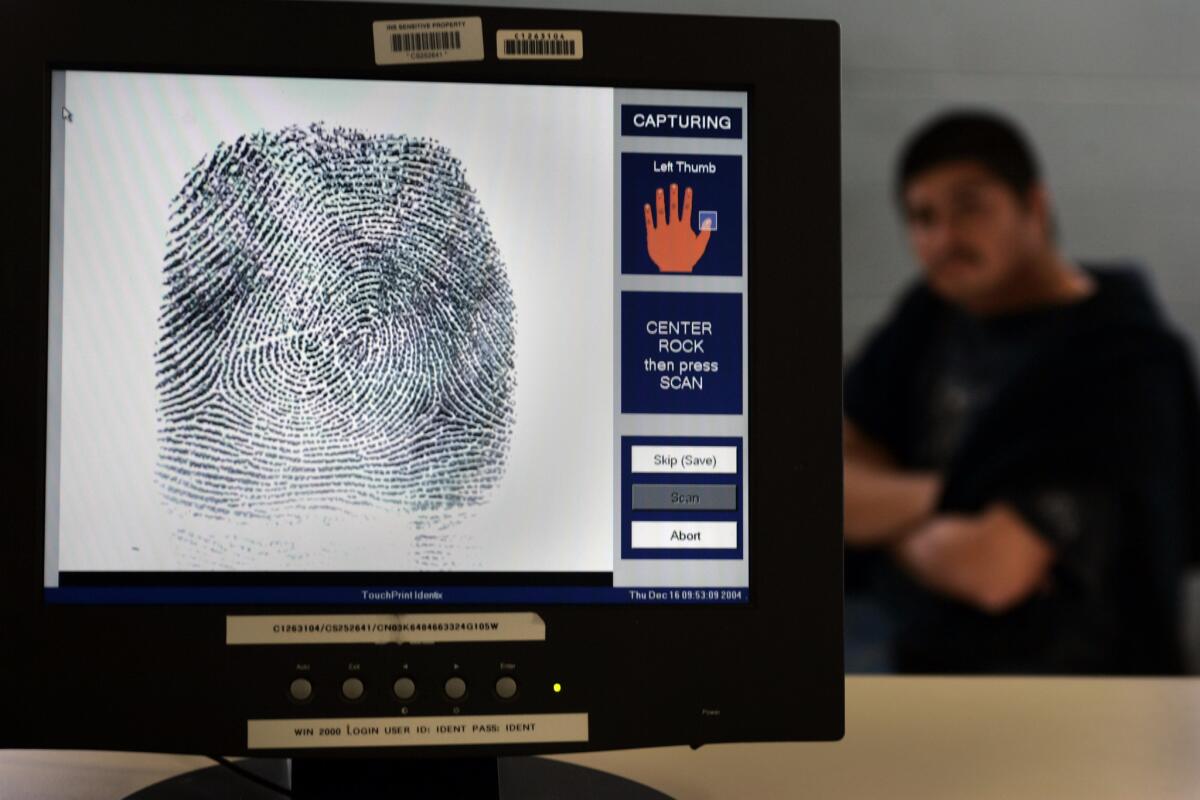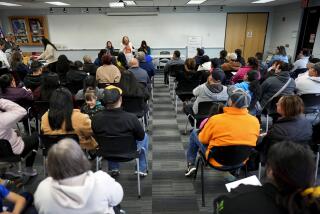Editorial: Will Secure Communities work for immigration enforcement?

The federal government’s Secure Communities program has been as controversial as it has been counterproductive, so we’re glad the Obama administration’s new approach to immigration enforcement will mean the program’s demise. Yet we also harbor some skepticism about its successor, the Priority Enforcement Program — and wonder whether there will be much difference.
Under Secure Communities, local police forwarded fingerprints of detained criminal suspects to the FBI and the Department of Homeland Security. Those agencies checked the prints against federal databases to find people with serious criminal records who were in the country illegally (thus targeted for removal). Database hits led to requests that the police hold the detainees past scheduled release dates pending further federal action.
Yet more than half of those eventually deported under the program had minor or no criminal records. Families were torn apart, and several thousand legal citizens were detained. In the worst cases, detainees languished in jails awaiting federal action without criminal charges or court orders, violations of the 4th Amendment for which federal courts have held the local agencies liable. The program generated so much mistrust that immigrant communities stopped cooperating with police in routine criminal matters. As local agencies began dropping out, the Department of Homeland Security tried in 2011 to fix the worst of the problems, with little effect.
Under the new Priority Enforcement Program, immigration agents will still receive fingerprints from local agencies, then make their priority those detainees who have been convicted of a felony, are gang members or pose “a demonstrable risk to national security.” Lower-priority targets include those convicted of three misdemeanors or one significant misdemeanor (such as domestic or sexual abuse); new illegal arrivals; and those who “have significantly abused the visa or visa waiver programs.”
To avoid the legal problems of unconstitutional detentions, the federal government will now just ask local agencies to notify them when a potentially deportable detainee is scheduled for release. If Immigration and Customs Enforcement agents determine that someone should be detained longer, they “must specify that the person is subject to a final order of removal or there is other sufficient probable cause to find that the person is a removable alien.”
Those are sound and reasonable parameters. But we can’t help but note that Secure Communities was supposed to target the dangerous and the threatening too, not the otherwise law-abiding but undocumented. Given the history of Washington wanting one thing and immigration agents on the ground doing another, the proof will be in the execution.
Follow the Opinion section on Twitter @latimesopinion
More to Read
A cure for the common opinion
Get thought-provoking perspectives with our weekly newsletter.
You may occasionally receive promotional content from the Los Angeles Times.






